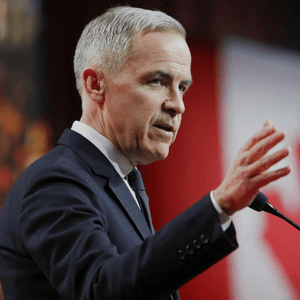
The Manitoba Progressive Conservatives are in a strong position, COVID approval is up, vote is up, and they’re winning the voters that matter most to the party’s political fortune. These are the findings from an INNOVATIVE spotlight on Manitoba from our ongoing provincial politics survey. This online survey was in field from September 24th to October 5th, 2021, with a weighted sample size of 500 Manitoba residents. Detailed methodology is provided in the appendix.
Manitoba PCs Regain Lead
In INNOVATIVE’s first release since former Premier Brian Pallister’s resignation on September 1st, 2021, the PC party has gained 10 points of combined vote (35%) to lead the NDP (27%) by 8 points. The Manitoba PCs also still lead on Provincial Party ID, with 1-in-3 (33%) saying they think of themselves as PC, followed by NDP (23%) and unaligned (23%).
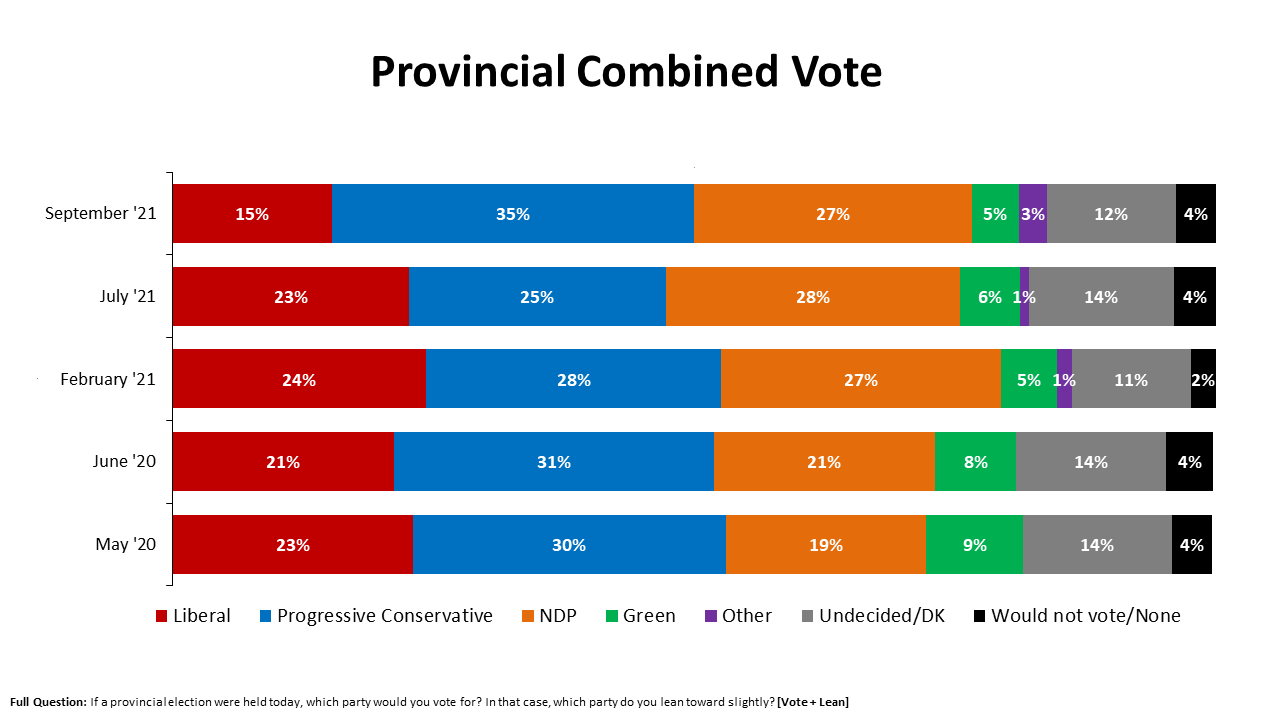
The leadership change appears to only be part of the reason for the PC rebound. Approval of Manitoba’s handling of COVID-19 has been increasing steadily since February. In September, the same month that Pallister resigned, net approval rose to +12%. As recently as July net approval for the province’s COVID-19 response was -2%.
Looking at Patterns Among Voters Who Share Similar Values
Grouping Manitobans by their shared values shows the challenge for both the PCs and the NDP.
Just one-in-five Manitobans fall into “small c” conservative value clusters. Ten percent (10%) of Manitobans are Populist Conservatives, and 10% are Deferential Conservatives, who agree the role of government is equal opportunity, are not skeptical of the profit motive, are fiscally conservative, and only differ on whether the government should listen to experts or common sense.
Similarly, just one-in-five Manitobans fall into the Core Left clusters, voters who believe government should focus on redistribution, spend according to need and feel profits bring out the worst in people.
More than half of Manitobans fall into more centrist groups. We find two types of “small l” liberal groups, voters who put creating opportunity ahead of redistribution but who feel government spending should be based on need, not ability to pay.
The dividing line is profit. The biggest group (27%) are “Business Liberals” who believe profit encourages hard work. “Left Liberals” make up 17% of the electorate and feel profit bring out the worst in people.
The final group are what we call the “Thrifty Moderates”. These voters want a government that will provide strong social programs and a helping hand in the economy, but they want to pay as they go. This group is open to voting for any party.
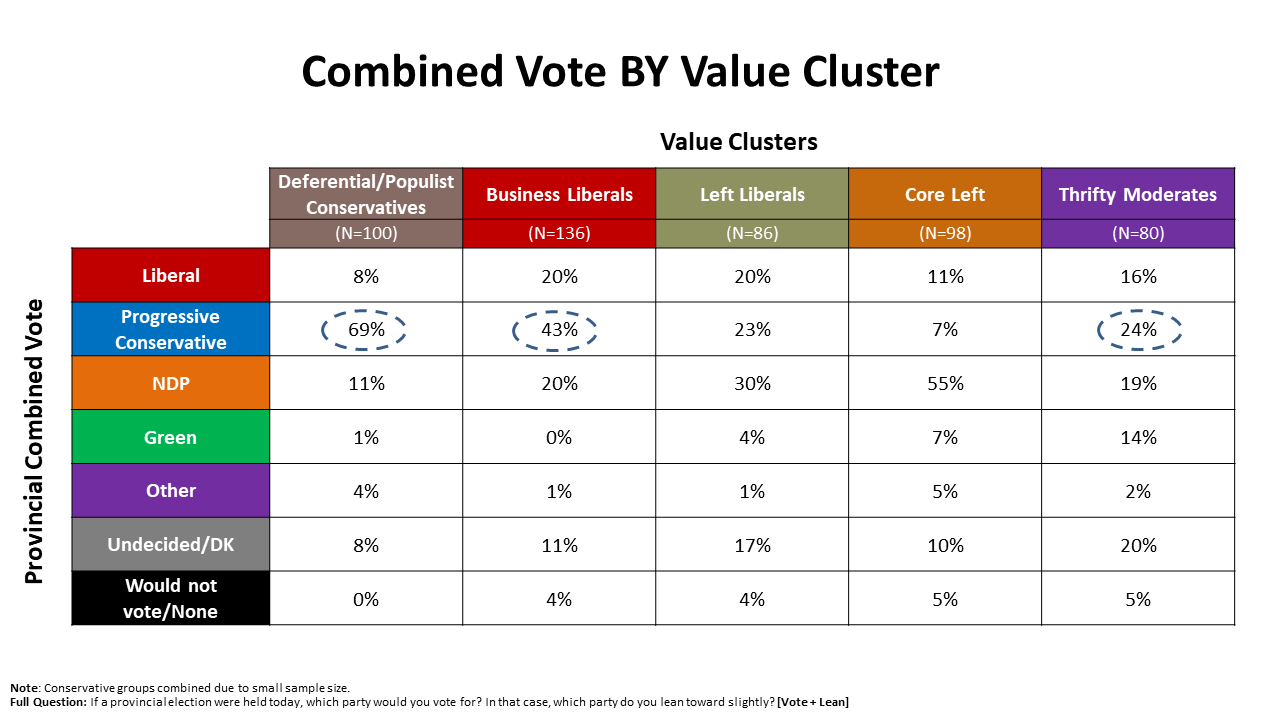
Looking at these value segments by combined vote, the PC’s are not only winning in their base with 69% of deferential and populist conservatives, they have a strong lead among Business Liberals (43%) and edge out the other parties among Thrifty Moderates (24%).
Looking at Patterns Among Voters Who Share Similar Economic Perspectives
In the 2016 US Presidential Election, there was a lot of attention focused on the impact of economic alienation. It turned out that the real issue then was cultural alienation, but we found economic attitudes do explain a lot about Canadian politics.
This analysis groups Manitobans based on two attitudes; whether they believe if you work hard you can get ahead, and whether they agree every year it gets harder to get by.
Just over three-in-ten (31%) are achievers who believe hard work will help you get ahead and who say they do NOT have a hard time getting by. Just over one-in-four (27%) are strugglers who believe if you work hard you can get ahead but are struggling to pay their bills. Almost a quarter (24%) are economically alienated voters who buy the idea that you can get ahead through hard work. These are Bernie voters in the US. Finally, just under one-in-five (18%) are ambivalent. They don’t really have any views on these statements. Some of the ambivalent are politically disengaged and don’t vote. Others just care about things other than finances.
As you might expect, Manitoba is polarized when we apply this lens. The PCs dominate among the “Achievers” with 57% support. The NDP do well, but not quite as well, among the “Alienated” with 40% support. The PCs also enjoy the most support (36%) among the “Strugglers” while the NDP lead (30%) among the “Ambivalent”.
Time for a Change
“Time for a change” is a key bellwether measure in provincial politics. INNOVATIVE combines two measures to better understand time for a change dynamics. Not only are respondents asked whether they agree or disagree it is time for a change, we also ask whether the governing party has problems but is still best able to form government.
At 61% agreement, time for a change is at levels that should cause real concern within the PC government. When we combine responses to the two statements, we find:
- 25% are core government supporters who reject time for a change and feel the PCs are best able to form government.
- 13% are Time for a Change Tories. This is a conflicted group of voters who despite feeling it is time for a change, still believe the PCs are best able to form government. This is a critical audience for the incoming PC leader.
- 12% are uncertain and open to persuasion if they vote at all.
- 27% agree or don’t know on “is time for a change?” and disagree or say “don’t know” to the PCs are best able to form government.
- 24% are strong government opponents who strongly agree it is time for a change and strongly disagree the PC are best able to form government.
With such a polarized electorate, the PCs are fortunate to have their hostile voters splitting their votes between the NDP, Liberals, and Greens.
Manitoba Leadership
When asked how favourably/unfavourably they view various Manitoba political leaders, respondents are 10 pts more favourable than unfavourable for Kelvin Goertzen, the interim PCP leader, 5 pts more favourable than not for NDP’s Wab Kinew, and 1 pt more unfavourable than favourable for Liberal’s Dougald Lamont. Voters are less certain about Goertzen than Kinew. There is far less awareness for Lamont.
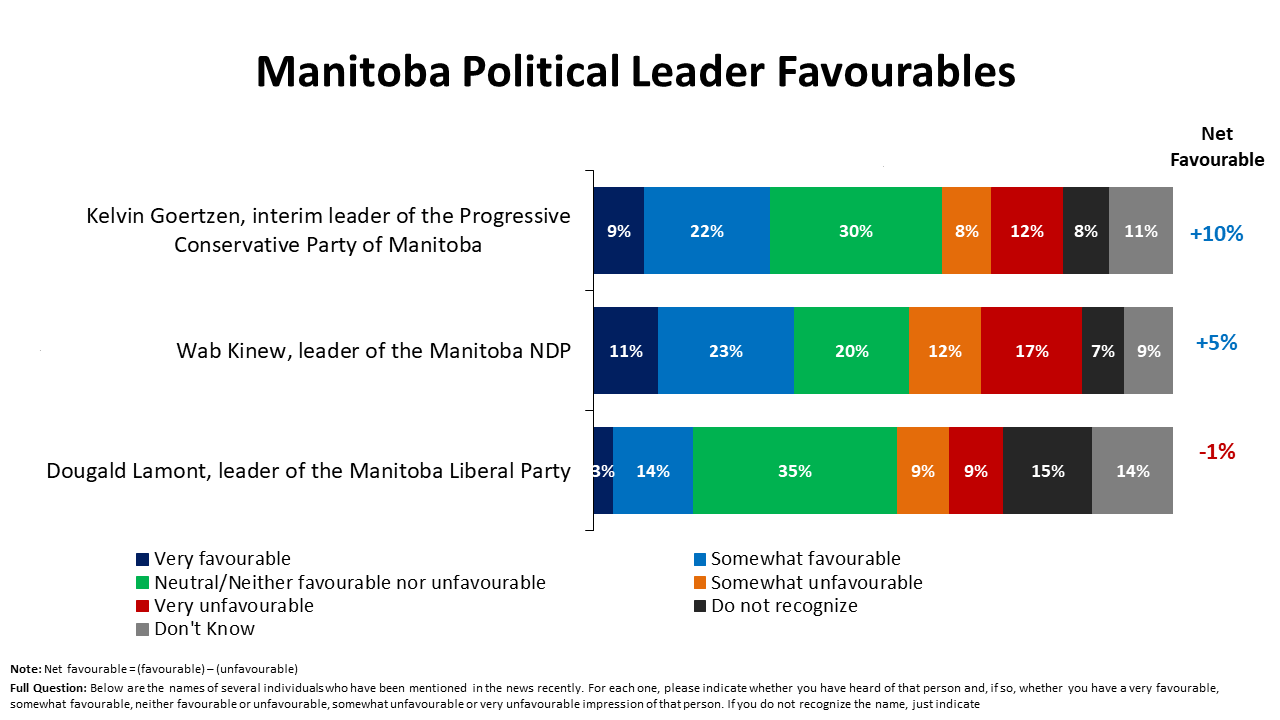
Manitobans seem to be evenly split on who would be best Premier between Kelvin Goertzen (25%) and Wab Kinew (25%). The Liberal’s Dougald Lamont (6%) is a distant third place.
Looking at leader brands, Kinew leads on compassion and change but he also leads on dishonest. Goertzen edges out Kinew on strong and competent. The new Manitoba leader will need to secure the edge on competence and strength while challenging Kinew on compassion and change.
PC Leadership Race
Looking at the final two competitors in the race for the PC leadership, we find both Stefanson and Glover have similar favourables but Glover has stronger unfavourables than her opponent. As a result, respondents were 4 points more favourable than not towards Stefanson, compared to 1 point less favourable than not for Glover. And, although 63% report not knowing which leader would make the best Premier, Stefanson (21%) has a 5-point lead over Glover (16%) on that question. This lead holds for most of the key attitudinal segments that matter to the PCs. The one exception is Time for a Change Tories who favour Glover 31% to 23% for Stefanson.
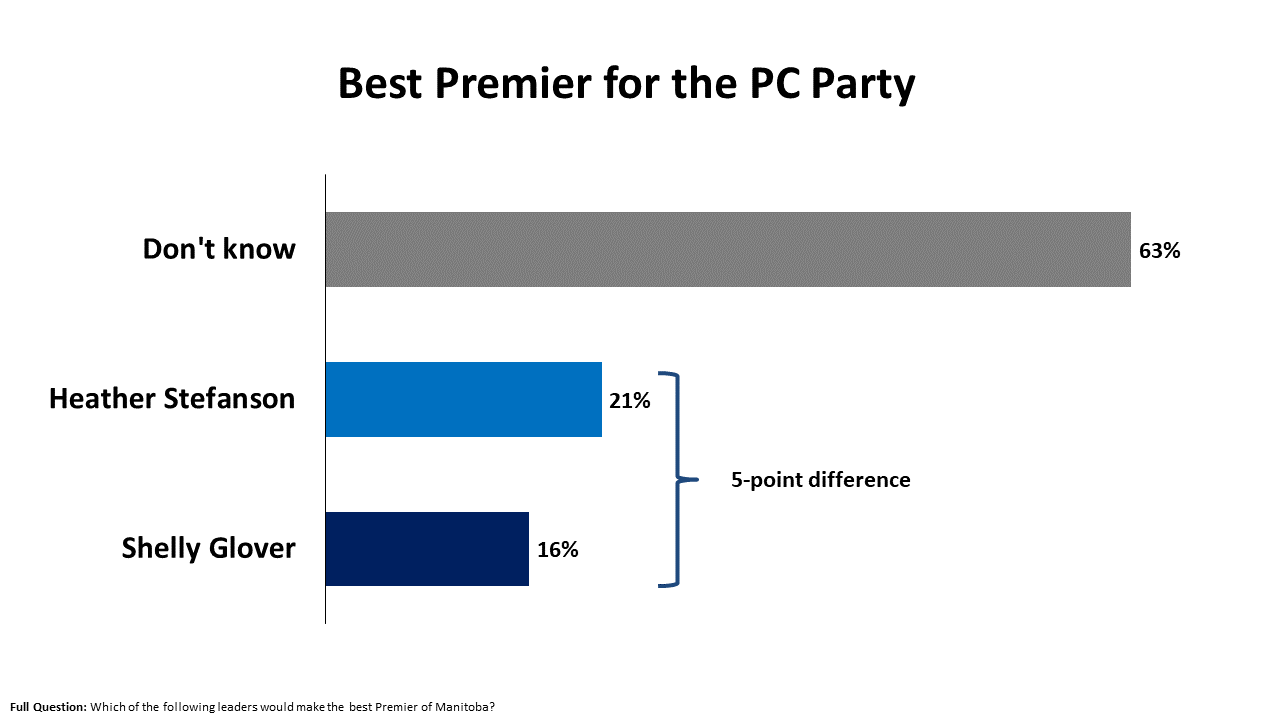
Respondents were asked how they’d vote in a provincial election both (1) with the current leaders, and (2) with their preferred PC leader. In either scenario, the PC lead vote lead remains virtually unchanged. It appears that Pallister’s departure is the key to PCs current rebound. The new leader, whoever she is, will initially add little to the current PC strength. The key potential for change between now and the impending election will be the voters’ reaction to the new leader’s initial performance. Many Manitobans remain on the fence about the two potential new Premiers. First impressions can either lock-in the PCs’ current lead or open the door to a more competitive race.


